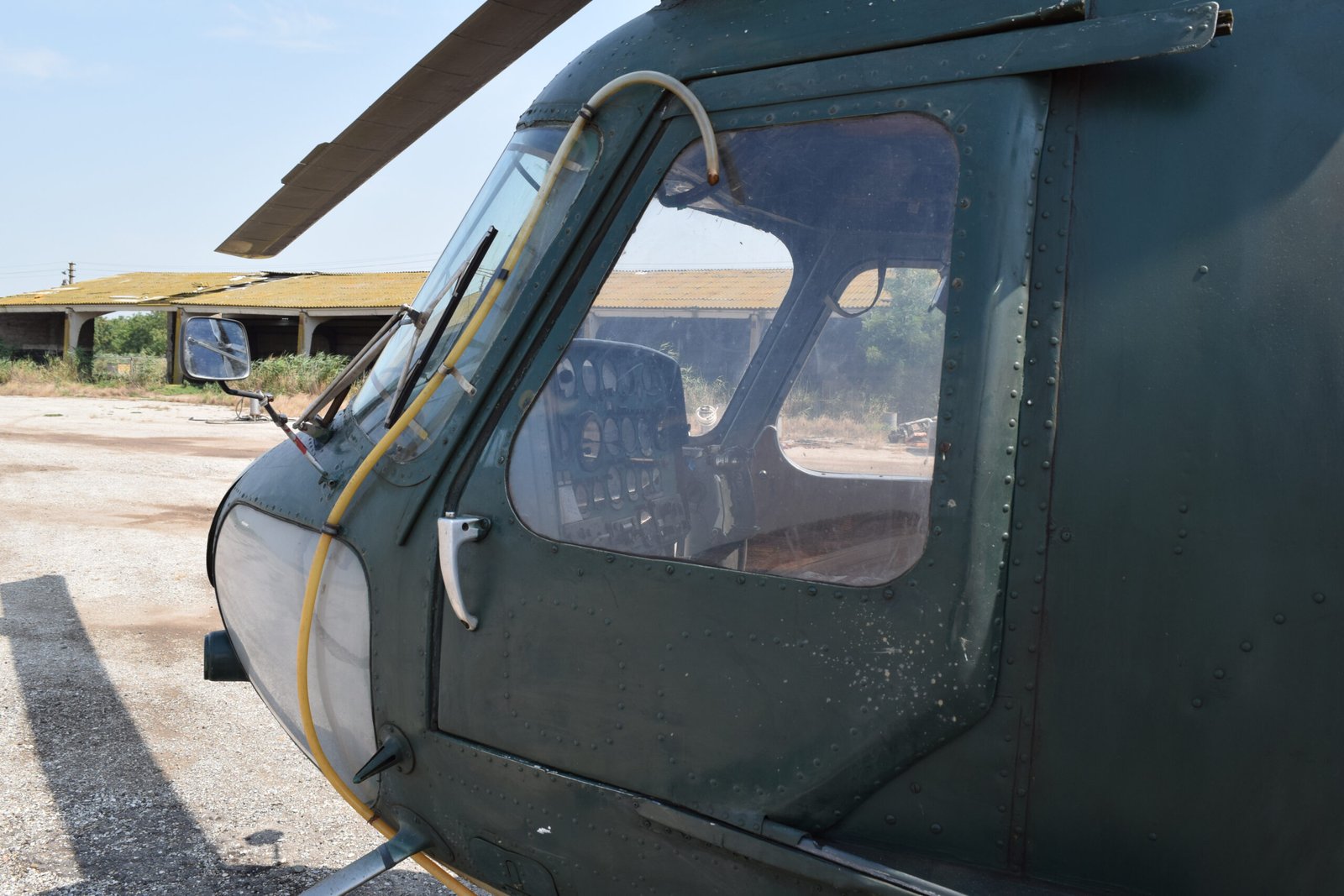Global Connectivity
Flight Paths: Exploring the Impact of Aviation on Global Connectivity
Aviation serves as the backbone of global connectivity, bridging vast distances and cultures in a matter of hours. As air travel continues to evolve, so too does the need for skilled professionals equipped with the knowledge and expertise to navigate this dynamic industry. In this post, we will explore various avenues for education within aviation, highlight some engaging resources for enthusiasts and professionals alike, and touch upon FAA-approved flight schools.
*Types of Aviation Courses**
When it comes to pursuing a career in aviation, numerous educational pathways exist. These courses can cater to diverse interests—ranging from piloting to aerospace engineering. Here are some common types:
1. **Pilot Training Programs**: These courses focus on preparing aspiring pilots with essential flying skills. They typically start with private pilot licenses (PPL) and progress through instrument ratings (IR), commercial pilot licenses (CPL), and even airline transport pilot licenses (ATPL).
2. **Air Traffic Control Training**: For those fascinated by managing air traffic, specialized programs teach students how to coordinate aircraft movements safely and efficiently.
3. **Aviation Management Degrees**: Combining business acumen with aviation principles, these programs prepare students for managerial roles within airlines or airports.
4. **Aircraft Maintenance Courses**: These technical programs train individuals in the maintenance and repair of aircraft systems, ensuring safety and compliance with regulations.
5. **Flight Dispatch Training**: This course prepares students to plan flight routes, manage fuel loads, and ensure that all regulatory requirements are met before a plane takes off.
The variety within aviation education reflects its multifaceted nature—offering something for everyone interested in joining this exhilarating field.
*Engaging Aviation Resources**
For anyone passionate about aviation or looking to keep abreast of industry trends, numerous blogs, websites, and social media platforms serve as excellent resources:
**Blogs/Websites**:
– *AirlineReporter.com*: A blog dedicated to news about airlines combined with personal experiences.
– *The Points Guy*: Focused on maximizing travel rewards through points accumulation.
– *FlyingMag.com*: Offers expert insights into flying techniques alongside aircraft reviews.
**Social Media Sites**:
– Follow hashtags like #AvGeek on Twitter or Instagram for stunning aerial photography and community discussions.
– Join Facebook groups such as “Pilots Without Borders” which connects aviators across the globe for humanitarian missions.
These platforms not only provide valuable information but also foster a sense of community among aviation enthusiasts.
*FAA Approved Flight Schools**
If you’re considering taking your first steps towards becoming a pilot or advancing your skills further, FAA-certified flight schools are essential destinations. They comply with strict federal standards ensuring quality training:
1. **Local Flight Schools**: Many regional airports host small flight schools that offer personalized training sessions tailored to individual needs.
2. **University Programs**: Several universities now feature robust aviation programs offering degrees along with practical flight experience at affiliated airports.
3. **Simulator Centers**: Advanced simulators provide an immersive learning experience without leaving solid ground! They allow pilots-in-training to practice emergency procedures or familiarize themselves with complex aircraft systems before actual flights.


In closing, the influence of aviation on global connectivity is profound—and it all begins with education! With various courses available catering to different interests within the field, countless online resources enriching our understanding of aviation trends—including FAA-approved institutions paving the way for future pilots—the sky truly is not just the limit; it’s merely another starting point!
Beyond the Skies: The Role of Aviation in Global Connectivity
Aviation, an industry that has transformed how we connect with one another, plays a pivotal role in bridging distances across the globe. Its influence extends beyond mere transportation; it fosters trade, cultural exchange, and international collaboration. As the world continues to embrace globalization, the demand for skilled aviation professionals is more pressing than ever. This post delves into various educational avenues within aviation and highlights integral resources for aspiring aviators.
### Aviation Schools by Types of Courses
When it comes to pursuing a career in aviation, there are multiple pathways depending on your interests and goals. Here are some prominent types of courses available:
1. **Pilot Training Programs**: These programs prepare students for the skies through both ground school and flight training. They typically cover essential topics such as navigation, meteorology, and aircraft systems.

2. **Aircraft Maintenance Engineering**: For those inclined towards technical aspects, these courses involve learning about aircraft mechanics and maintenance protocols to ensure safety and efficiency.
3. **Air Traffic Control Training**: Students interested in managing air traffic will find specialized programs that teach communication skills, radar operations, and emergency response strategies vital for maintaining safe skies.
4. **Aviation Management**: This area encompasses business-oriented courses focusing on airport operations, airline management, and logistics—perfect for future leaders in the aviation sector.
5. **Flight Dispatch Certification**: Aspiring flight dispatchers can pursue certification programs that equip them with knowledge about flight planning, weather analysis, and regulatory compliance.
### Lists of Aviation Blogs, Websites, Social Media Sites
The digital age offers a wealth of information at our fingertips. Several blogs and websites serve as invaluable resources for anyone interested in aviation:
**Airliners.net** – A community-driven site featuring photographs and discussion forums related to airlines and airports.
**Flying Magazine** – Offers articles on general aviation topics including pilot techniques and safety tips.
**The Points Guy** – Focuses on travel rewards but often covers airline news affecting frequent flyers.
**PPRuNe (Professional Pilots Rumour Network)** – An interactive forum where pilots share experiences and insights.
Social media also plays a significant role:
Follow accounts like @AviationWeek or @PilotNetwork on Twitter for real-time updates on industry developments.
Instagram accounts like @aviationphotodude showcase stunning aerial photography from enthusiasts worldwide.
### FAA Flight Schools/Airplane Schools/Simulators
In the United States alone, numerous FAA-certified flight schools offer rigorous training programs tailored to diverse needs:
1. **Embry-Riddle Aeronautical University** – Renowned for its comprehensive pilot training programs coupled with advanced technology facilities.
2. **ATP Flight School** – Known for accelerated programs designed to take students from zero experience to commercial pilot status swiftly.
3. **FlightSafety International** – Offers simulator training that allows pilots to practice procedures safely without leaving the ground.
4. **Local Community Colleges** – Many provide accessible aviation courses at affordable rates while fostering practical flying opportunities.
As we continue navigating this dynamic landscape known as aviation, it’s clear that education is key to enhancing global connectivity. With countless options available—from specialized schools offering targeted training modules to online platforms buzzing with information—the future of aviation is ripe with possibility! Whether you’re aiming high as a pilot or seeking stability behind-the-scenes in management or maintenance roles, embracing this journey means becoming part of something extraordinary—an ever-evolving network connecting us all beyond the skies!
Flight Paths: How Aviation is Shaping Global Connectivity
In an era where the world feels smaller than ever, aviation plays a pivotal role in knitting together distant regions, cultures, and economies. The advancements in technology not only enhance safety and efficiency but also shape the future of global connectivity. As we soar through the skies, let’s explore how aviation technology training, online resources, and emerging trends like drones are revolutionizing this industry.

Aviation technology has come a long way since the days of wooden biplanes. Today’s pilots rely heavily on sophisticated simulators that replicate various flying conditions and scenarios. These state-of-the-art training tools allow aspiring aviators to hone their skills without leaving the ground. Simulators provide a risk-free environment for learning, enabling pilots to navigate thunderstorms or emergency situations while receiving real-time feedback from instructors. This shift towards virtual training is not just cost-effective; it enhances safety by ensuring that pilots are well-prepared before they take to the skies.
For those looking to delve deeper into aviation beyond traditional flight schools, a plethora of online courses and ground schools are available at your fingertips. Platforms such as Coursera and Udemy offer specialized courses covering everything from aerodynamics to air traffic control principles. The flexibility of these programs allows individuals to learn at their own pace while balancing other commitments—perfect for those aspiring to become certified pilots or aviation professionals.
In addition to formal education, staying informed about industry trends is crucial for anyone passionate about aviation. A wealth of blogs and websites can serve as invaluable resources for insights into current events, technological advancements, and career advice within the field. Some notable mentions include:
1. **AirlineGeeks.com** – Provides up-to-date news on airlines around the globe.
2. **ThePointsGuy.com** – Focuses on travel tips and maximizing loyalty points.
3. **FlyingMagazine.com** – Offers expert reviews on aircraft along with pilot stories.
4. **PPRune.org** – A popular forum among pilots where they share experiences and advice.
5. **AviationWeek.com** – Delivers in-depth analysis of aerospace developments.
Social media platforms also play a significant role in connecting aviation enthusiasts worldwide. Twitter accounts like @AeroNewsNet keep followers updated on breaking news, while Instagram profiles such as @PilotLife showcase stunning aerial photography alongside glimpses into a pilot’s daily life.

As we explore further into modern aviation landscapes, drones are proving transformative—opening new avenues for connectivity and commerce while raising questions about regulations and airspace management. Drones have found applications beyond mere recreational use; industries such as delivery services, agriculture, surveillance, and even emergency response have started integrating unmanned aerial vehicles (UAVs) into their operations.
For those intrigued by this burgeoning sector or considering a career in piloting drones commercially, it’s essential to understand FAA regulations governing drone usage. The Federal Aviation Administration provides comprehensive resources online that cover licensing requirements for remote pilots (Part 107 certification), safety guidelines for drone operation, and tips for navigating airspace restrictions.
So whether you’re an aspiring pilot eager for knowledge or simply a curious traveler keen to understand more about our interconnected world through aviation—there’s never been a better time to get involved in this dynamic field! With technology advancing rapidly alongside educational opportunities expanding infinitely—aeronautical dreams can be transformed into reality faster than ever before! Embrace your passion today; who knows where your flight path may lead?


